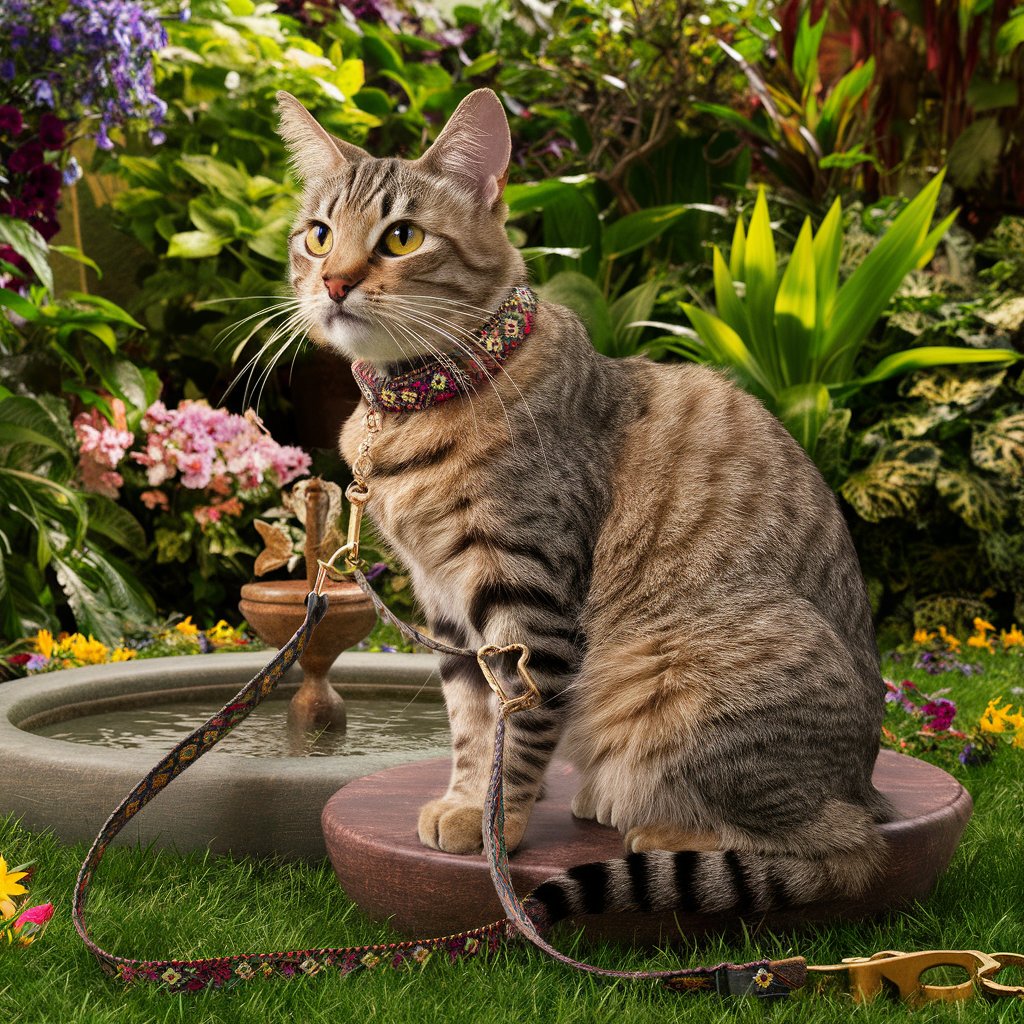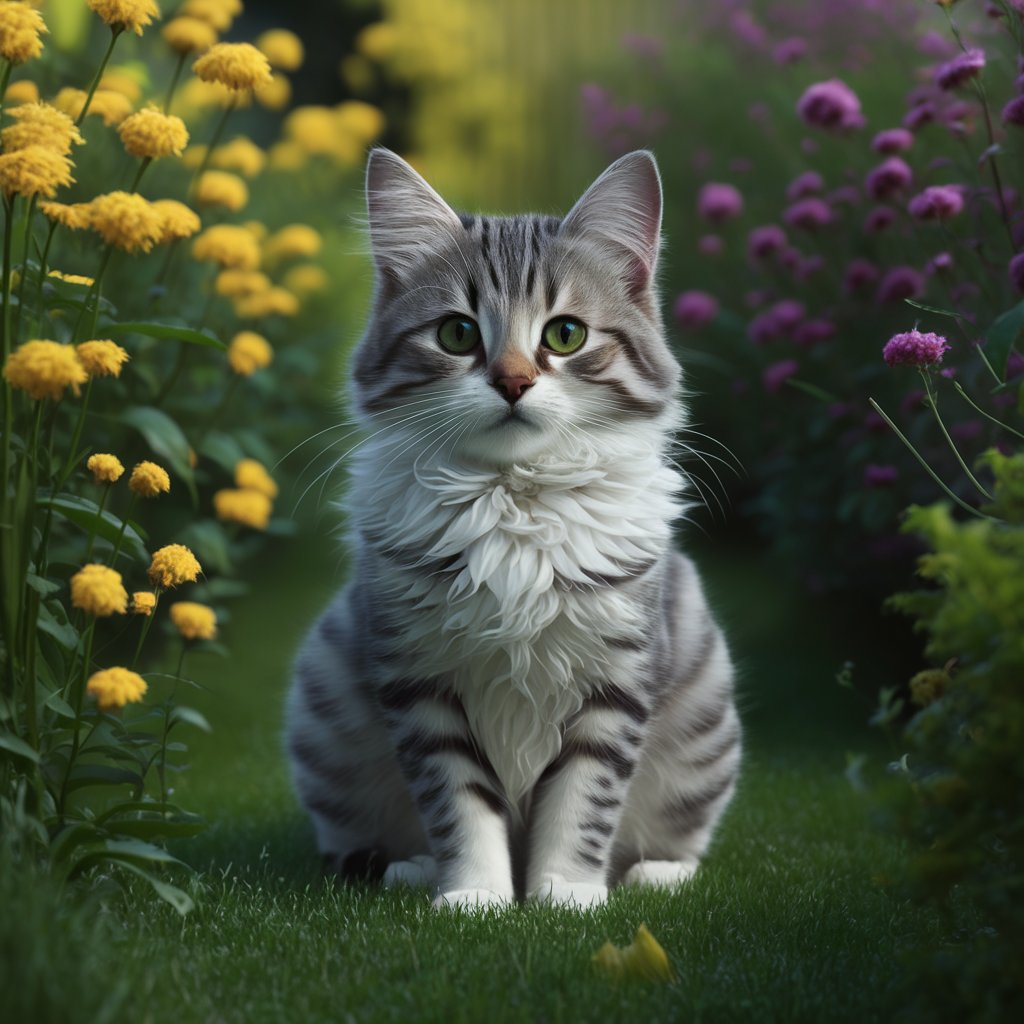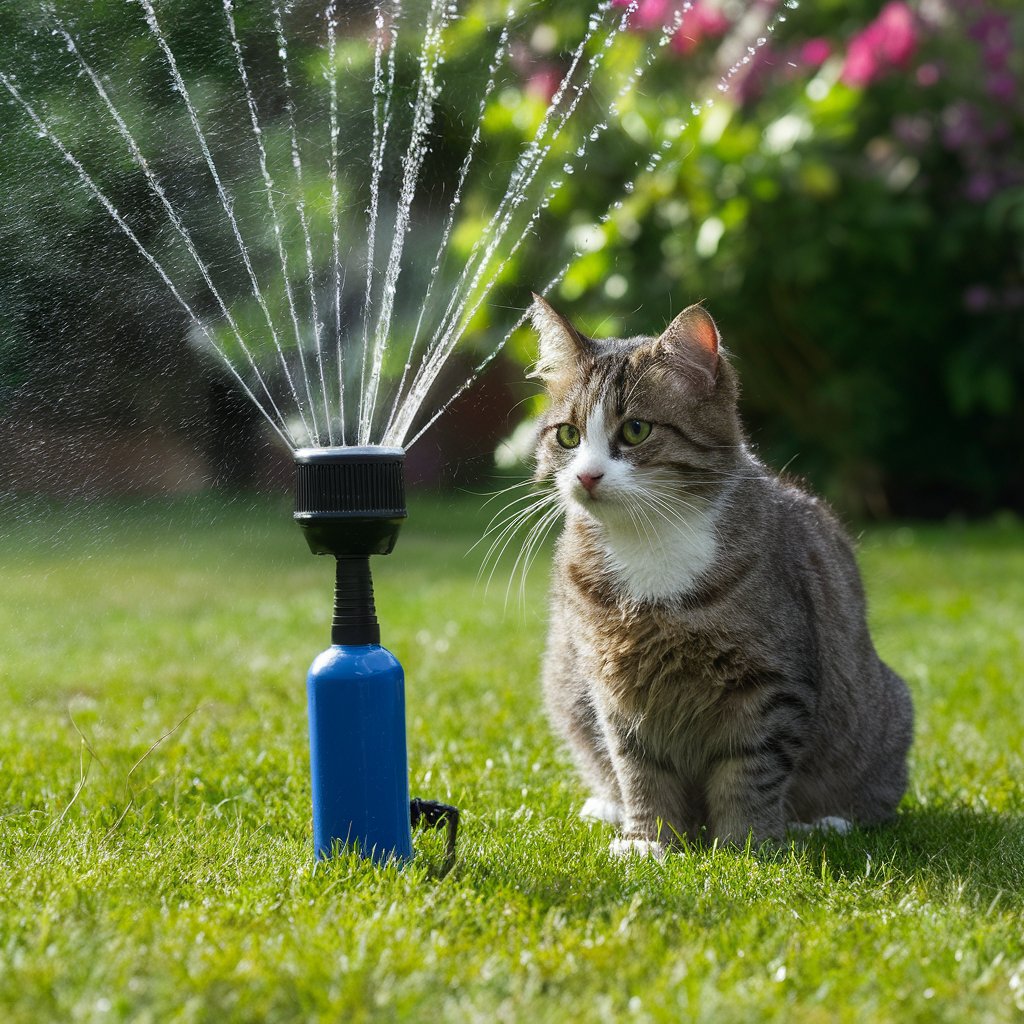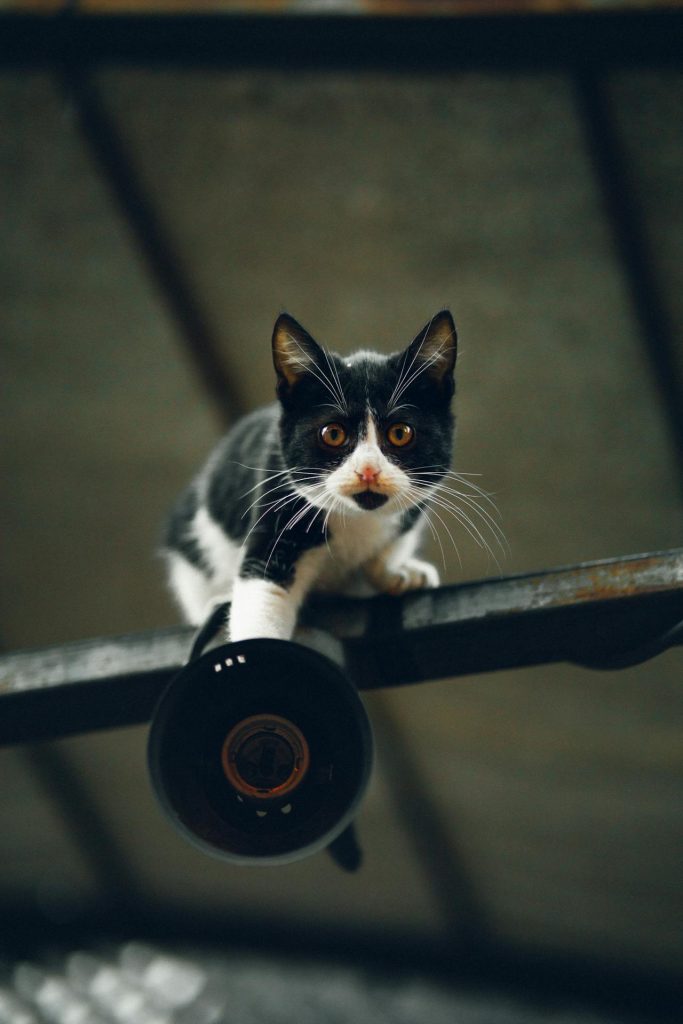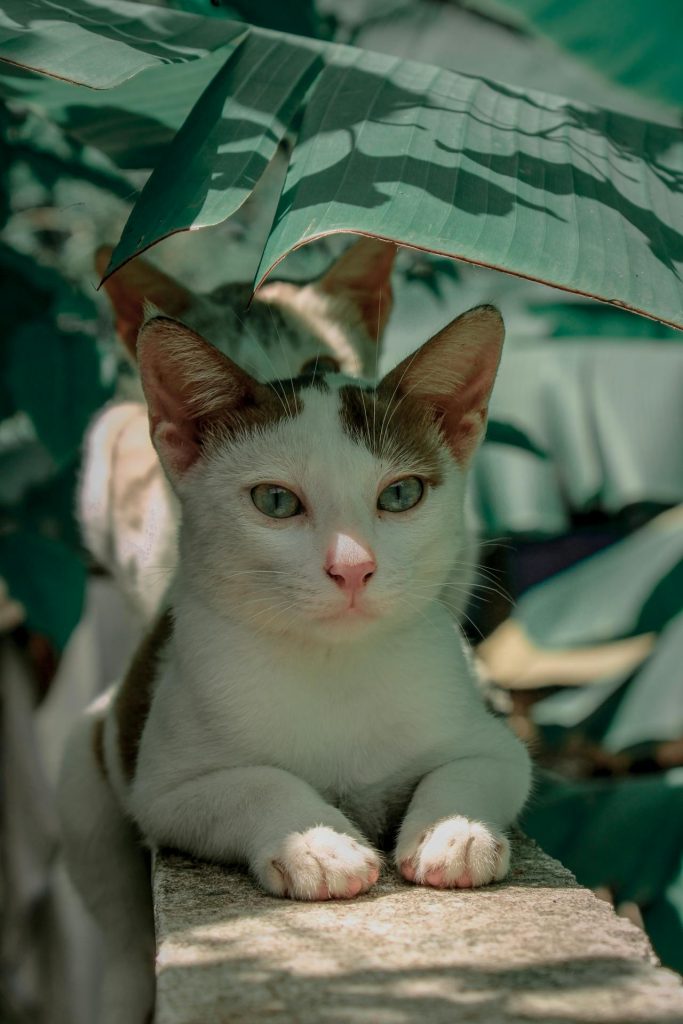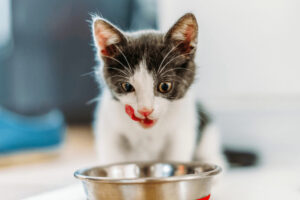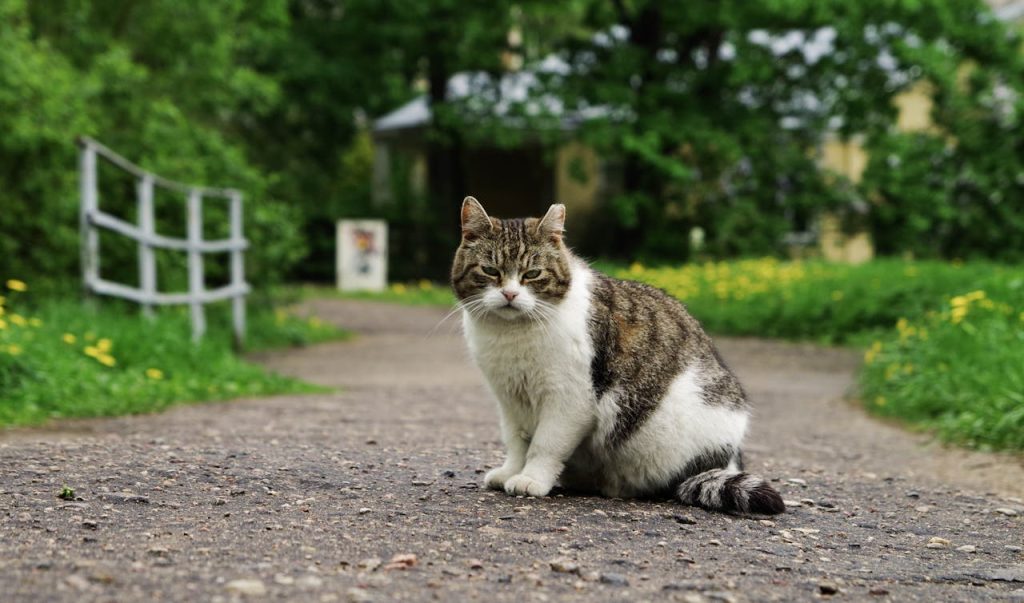
To cat-proof your garden, start with cat-resistant plants like Coleus canina and lavender, known for repelling cats with their essential oils.
Employ motion-activated sprinklers and ultrasonic devices to reduce feline presence by up to 80%.
Raised garden beds create a physical barrier, while effective fencing solutions such as galvanized steel mesh prevent intrusions.
Design designated play areas with cat-friendly plants like catnip.
Use natural repellents like citrus peels for their high limonene content.
Regular garden hygiene and secure compost bins further deter cats.
This post contains affiliate links. However all the information provided on this site are my own honest opinions. See more in Disclaimer.
Discover more techniques to guarantee your garden stays cat-free and thriving.
Table of Contents
Key Takeaways
- Install motion-activated sprinklers to deter cats with bursts of water upon detecting movement.
- Choose cat-resistant plants like Coleus canina, lavender, and rosemary. These plants repel cats with their scents.
- Use raised garden beds at least 18 inches high. This will create a physical barrier against cats.
- Create designated cat play areas with non-toxic plants, toys, and secure fencing. This will keep cats entertained and away from other garden sections.
Choose Cat-Resistant Plants
To effectively deter cats, select plants known for their natural repellents, such as Coleus canina, which emits a scent that cats find unpleasant.

This plant, also known as ‘Scaredy Cat Plant,’ contains volatile organic compounds that irritate feline olfactory receptors.
Lavender and rosemary are additional options, providing both aesthetic appeal and repellent properties due to their essential oils.
When incorporating these plants, make sure you also consider cat-friendly herbs like catnip and cat grass. These can serve as decoys, directing cats away from other areas of your garden.
By strategically placing these herbs, you create cat-friendly zones that mitigate damage to more delicate plants.
Equally important is toxic plant awareness. Common garden plants like lilies, oleander, and azaleas contain compounds that are toxic to cats, potentially causing severe health issues.
For instance, the alkaloids in lilies can lead to renal failure, while oleander’s cardiac glycosides affect the heart. Prioritize non-toxic alternatives to create a safer environment.
Install Cat Deterrents
To effectively deter cats, you can install motion-activated sprinklers which employ infrared sensors to detect movement and release a water burst, exploiting felines’ aversion to water.
Additionally, ultrasonic repellent devices emit high-frequency sounds that are inaudible to humans but distressing to cats, thereby keeping them away.
Scientific studies affirm the efficacy of these deterrents in reducing unwanted feline presence in gardens.
Motion-Activated Sprinklers
Motion-activated sprinklers utilize infrared sensors to detect movement and release a burst of water, effectively deterring cats from entering your garden.
These systems are highly beneficial due to their precision and non-toxic nature. When a cat triggers the motion sensors, the sprinkler activates, emitting a sudden spray of water.
The combination of unexpected movement and water pressure startles the cat, discouraging future visits.
| Feature | Description |
|---|---|
| Motion Sensors | Detect infrared movement within a specific range |
| Water Pressure | Adjustable to guarantee ideal deterrence |
| Coverage Area | Typically covers a radius of up to 35 feet |
| Installation | Easy setup with minimal tools required |
| Power Source | Solar or battery-operated options available |
Installing these devices is straightforward: position the sprinkler unit so it covers the desired area. Adjust the water pressure to avoid harming plants, and connect to a water source.
Evidence suggests that motion-activated sprinklers are effective in reducing unwanted cat presence by up to 80%. Their scientific design and environmentally friendly operation make them a superior choice for garden protection.
Ultrasonic Repellent Devices
Ultrasonic repellent devices emit high-frequency sound waves that are inaudible to humans but highly disruptive to cats. These devices effectively deter cats from the garden.
They typically operate at an ultrasonic frequency range of 18-24 kHz, which is specifically calibrated to target the auditory sensitivity of cats.
Research indicates that such frequencies can cause discomfort and disorientation in feline subjects, thereby modifying cat behavior and discouraging them from entering treated areas.
To install an ultrasonic repellent, position the device at ground level, aiming it towards the area where cat intrusions are most frequent.
Make sure the device is equipped with motion sensors to activate the ultrasonic frequency only when movement is detected. This conserves energy and prolongs the device’s operational lifespan.
It is essential to select a device with adjustable frequencies to prevent cats from habituating to a single frequency over time, which could reduce the deterrent effect.
Moreover, field studies have documented a significant reduction in cat intrusions with the use of ultrasonic repellents, underscoring their efficacy.
By integrating these scientifically-backed devices into your garden, you can effectively alter cat behavior, creating a feline-free environment.
Use Raised Garden Beds
Implementing raised garden beds can considerably reduce the likelihood of cats disturbing your plants by creating a physical barrier and altering their digging behavior.
Raised bed materials, such as wood, metal, or composite plastics, elevate the garden’s surface and make it less accessible to cats. By choosing durable materials, you guarantee longevity and effectiveness in keeping cats at bay.
The height of the raised beds is vital; studies suggest that a minimum height of 18-24 inches is sufficient to deter most cats from jumping into the garden area.
Utilizing specific planting techniques within these raised beds can also enhance their deterrent effect. Dense planting, for example, minimizes exposed soil, which cats often find appealing for digging.
Trending in Cats:
Incorporating ground covers or living mulches such as clover can further reduce the attractiveness of the soil surface.
Additionally, strategic placement of thorny or aromatic plants like lavender and rosemary along the edges of the raised beds can act as a natural repellent due to their texture and scent.
Implement Fencing Solutions
While raised garden beds offer a solid defense, installing effective fencing solutions can provide an additional layer of protection against feline intrusions.
To optimize your garden design, selecting the appropriate fencing materials is crucial. Galvanized steel mesh, known for its durability and resistance to corrosion, is a reliable option.
Its fine mesh size prevents cats from squeezing through, guaranteeing your plants remain undisturbed.
Another effective material is polypropylene netting, which is lightweight yet robust. It’s flexible enough to mold around various garden configurations, making it a versatile choice for complex garden designs.
When installing these materials, confirm the fence height is at least six feet to deter agile cats from jumping over. Incorporate an angled top on the fence, where the upper portion tilts outward at a 45-degree angle.
Scientific studies indicate that this design markedly reduces a cat’s ability to climb over.
Additionally, bury the fencing at least six inches below ground to prevent burrowing attempts.
Create Designated Play Areas
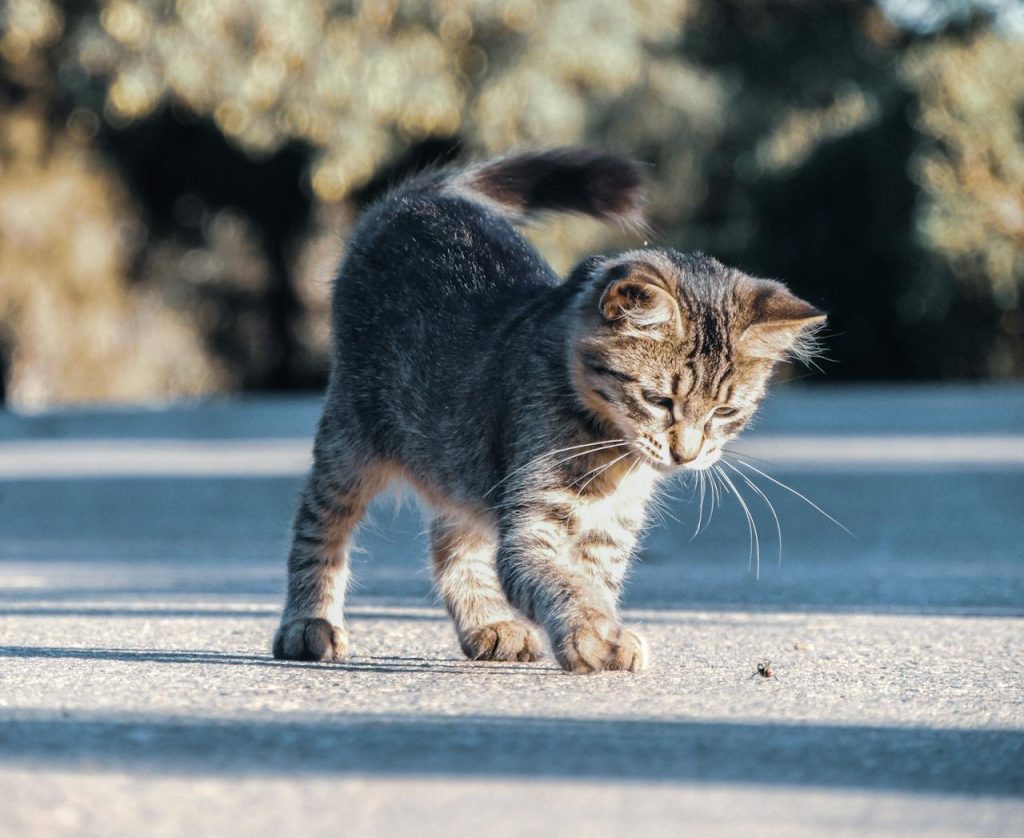
To create designated play areas, you should establish a safe play zone using cat-friendly materials and barriers.
Ascertain the setup is secure to prevent your cat from accessing potentially hazardous garden sections.
Incorporate engaging cat toys, which studies show can reduce stress and improve feline well-being.
Safe Play Zone Setup
Establishing a designated play area for your cat involves using materials like cat-friendly plants, secure fencing, and interactive toys to create a stimulating yet safe environment.
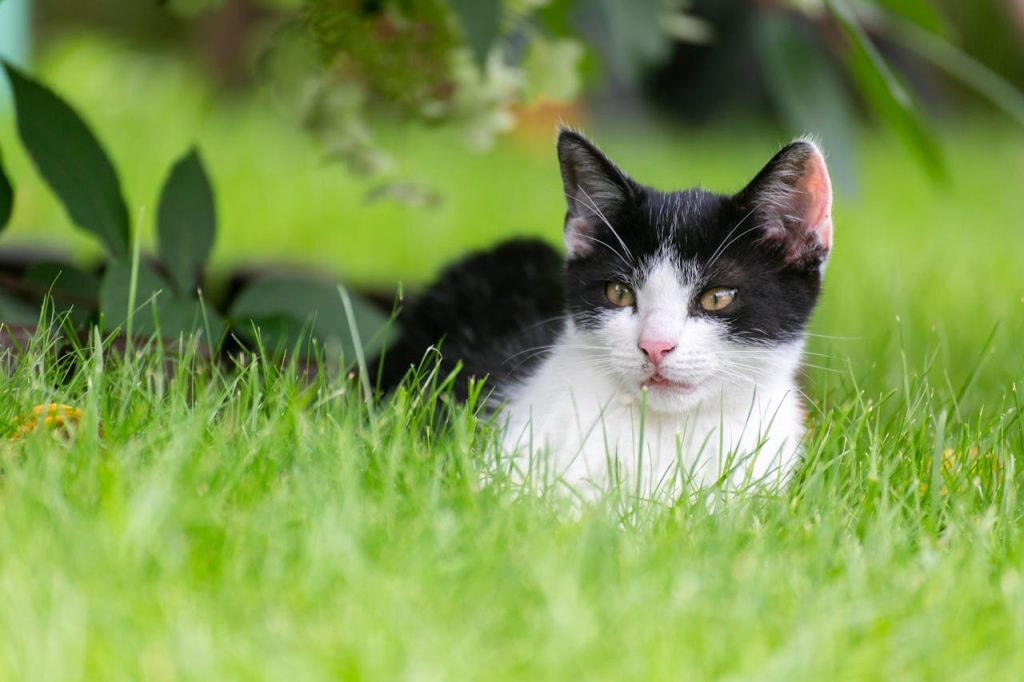
Begin by planting species such as catnip (Nepeta cataria) and cat grass (Dactylis glomerata) to provide enrichment activities and sensory exploration.
These plants are non-toxic and can stimulate olfactory and gustatory senses, enhancing your cat’s overall well-being.
Incorporate secure fencing around the play zone to prevent your cat from wandering off. Opt for materials like polypropylene mesh or PVC-coated wire, which are durable and difficult for cats to climb.
Guarantee the fencing height is at least six feet to deter jumping.
Additionally, install inward-angled tops to further impede escape attempts. Interactive toys should be strategically placed throughout the area to encourage physical activity and cognitive stimulation.
Consider installing climbing structures, tunnels, and scratching posts.
These elements not only provide exercise but also satisfy innate behaviors such as scratching, climbing, and hiding.
Lastly, regularly inspect the play area for hazards such as sharp objects or toxic plants. Keeping the zone clean and well-maintained guarantees a safe and enriching environment for your feline friend.
Attractive Cat Toys
Enhancing your cat’s designated play area with attractive toys such as puzzle feeders, feather wands, and laser pointers promotes mental stimulation and physical activity.
Incorporating these elements can mitigate behavioral issues by satisfying your cat’s instinctual needs.
Interactive feeding devices like puzzle feeders not only provide nourishment but also engage your cat’s brain, slowing down consumption and preventing obesity.
Feather wands and laser pointers offer significant sensory stimulation, mimicking prey movements that trigger your cat’s hunting instincts. These tools can reduce stress and enhance your pet’s overall well-being.
Consider the following when setting up your cat’s play area:
- Puzzle Feeders: Stimulate cognitive function and slow eating.
- Feather Wands: Encourage natural hunting behaviors and physical exercise.
- Laser Pointers: Offer dynamic, unpredictable movement patterns for high engagement.
Scientific studies support the use of puzzle feeders for improving feline problem-solving abilities and reducing the risk of obesity-related conditions.
Feather wands and laser pointers have been shown to increase physical activity, thereby promoting cardiovascular health and reducing anxiety.
Apply Natural Repellents
Natural repellents harness the power of certain plants and substances to effectively deter cats from invading your garden.
Integrate an herb garden with species like rosemary (Rosmarinus officinalis) and lavender (Lavandula angustifolia), which emit strong scents that cats find unpleasant.
Additionally, plants such as rue (Ruta graveolens) contain essential oils that act as natural cat deterrents due to their pungent aroma.
Citrus scents also play a pivotal role in cat repellency. You can utilize citrus peels, such as those from oranges (Citrus sinensis) and lemons (Citrus limon), by scattering them around your garden perimeter.
The high concentration of limonene and linalool in these peels is proven to be offensive to feline olfactory receptors.
Additionally, consider creating a citrus-infused spray by combining water with essential oils extracted from citrus fruits. Apply this solution to vulnerable areas in your garden to enhance the deterrent effect.
Scientific studies support the efficacy of these natural repellents. For instance, a study published in the Journal of Chemical Ecology demonstrated that certain plant-derived compounds can considerably alter animal behavior.
Maintain Garden Hygiene
Regularly maintaining garden hygiene greatly reduces the likelihood of attracting cats and other unwanted animals.
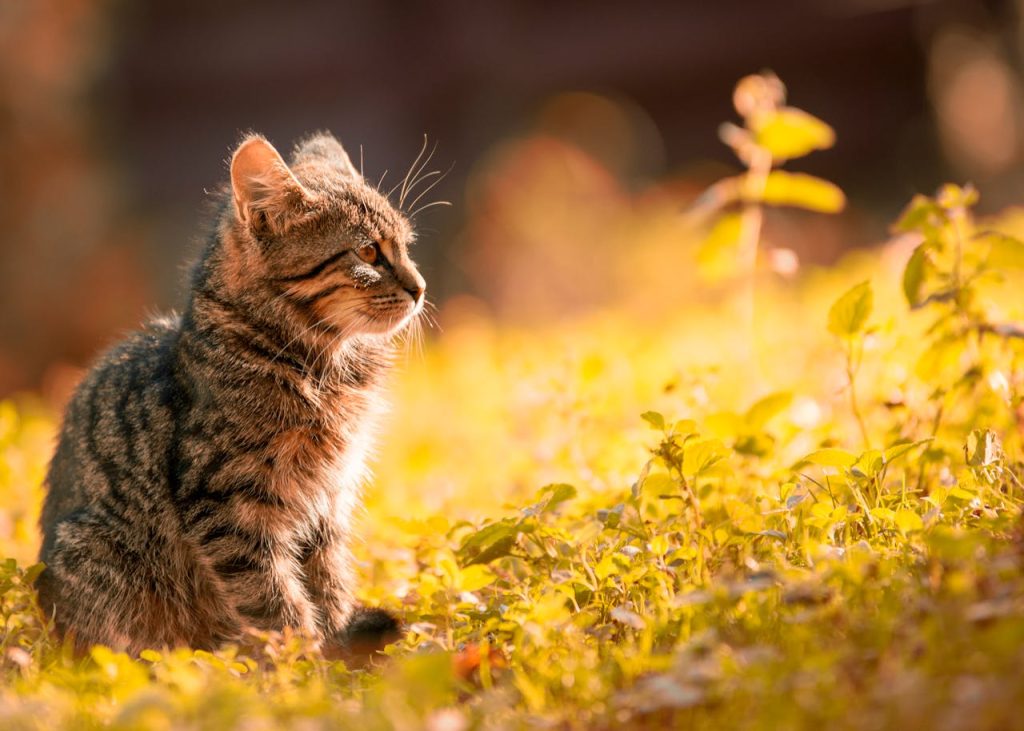
Implementing systematic garden maintenance and pest control measures will make your garden less appealing to these intruders.
Here’s a structured approach to keep your garden clean and cat-free:
- Remove Garden Waste: Decaying plant material and organic debris can attract pests, which in turn lure cats. Regularly clear away fallen leaves, twigs, and old plant matter to eliminate potential food sources for rodents and insects.
- Secure Compost Bins: Confirm compost bins are tightly sealed. Open compost bins can emit odors that attract cats and other animals. Utilize compost aeration methods and carbon-rich materials to minimize odors and enhance decomposition efficiency.
- Implement Proper Irrigation: Overwatering can lead to waterlogging, creating habitats for pests like mosquitoes. Use drip irrigation or soaker hoses to control moisture levels precisely. Reducing puddles and standing water helps eliminate breeding grounds for pests.
Frequently Asked Questions
To prevent cats from digging in your garden soil, use cat deterrent plants like Coleus canina. Install garden fencing with small mesh sizes to physically block them. Research shows these methods effectively reduce feline intrusions.
Remember the tale of Odysseus using clever tricks? You can employ similar strategies. Mulch with citrus scents or texture variations, like pine cones or chicken wire, creates an aversive environment. Scientific evidence shows cats dislike these deterrents.
Yes, specific garden layouts deter cats. Incorporate cat-friendly plants like lavender and rosemary, which cats dislike. Use garden barriers such as chicken wire or dense shrubbery. Evidence suggests these methods effectively reduce feline intrusion.
Imagine pesky felines deterred by your garden’s scent. Plant cat repellent plants like lavender and rosemary. Install effective barriers such as chicken wire or motion-activated sprinklers. Scientific studies show these methods markedly reduce unwanted cat activity.
Yes, companion planting can help. Choose herb selection strategically; plants like lavender and rosemary act as scent deterrents. Scientific studies show these strong aromas disrupt cats’ olfactory receptors, reducing their presence in your garden.
Conclusion
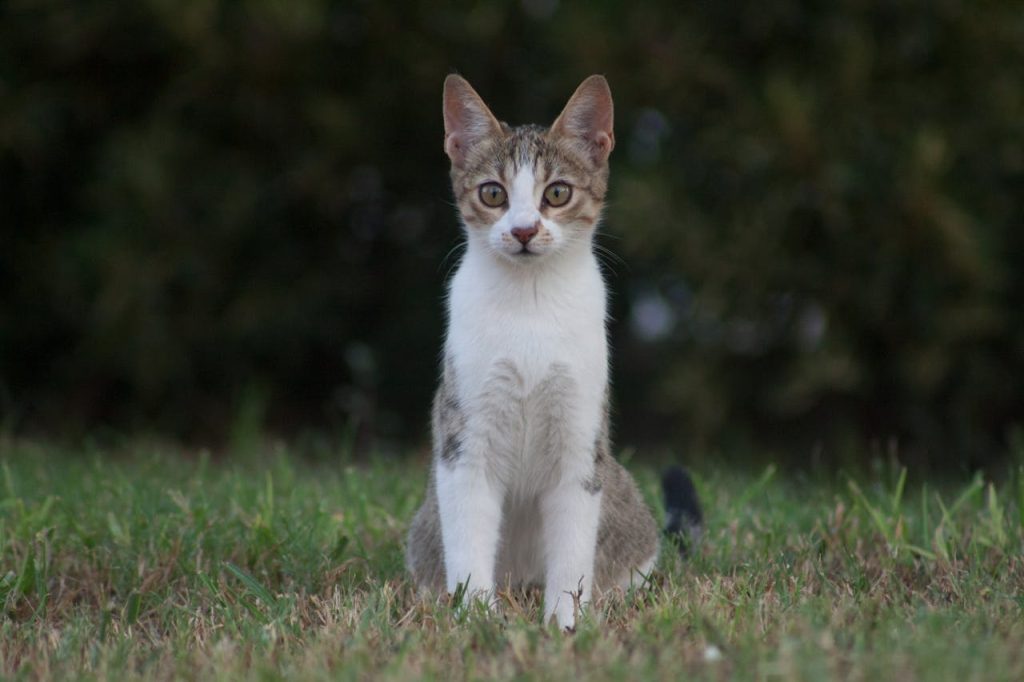
By choosing cat-resistant plants, installing deterrents, using raised beds, implementing fencing solutions, creating play areas, applying natural repellents, and maintaining garden hygiene, you’ll transform your garden into a cat-proof sanctuary.
These evidence-based strategies not only protect your plants but also guarantee a safer environment for all.
Embrace these scientific methods, and you’ll enjoy a flourishing garden free from feline interference.
With precision and care, you’ll achieve a harmonious balance between nature and your beloved pets.


